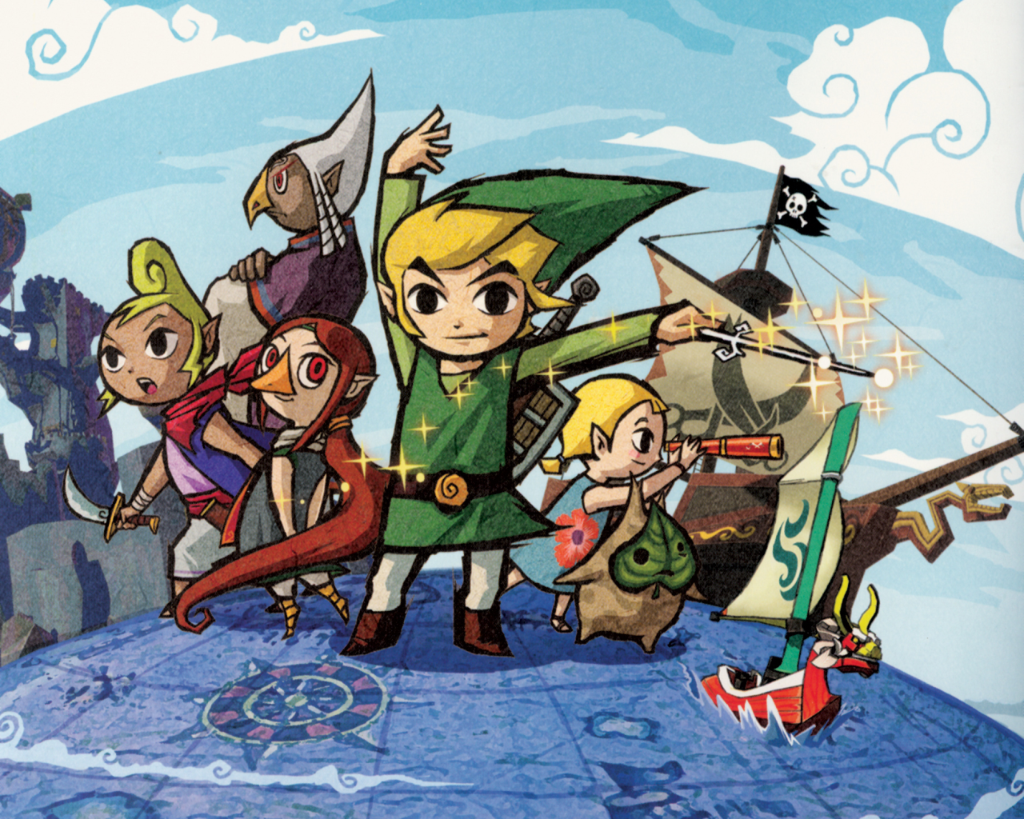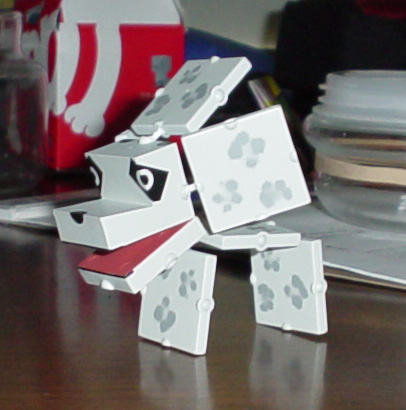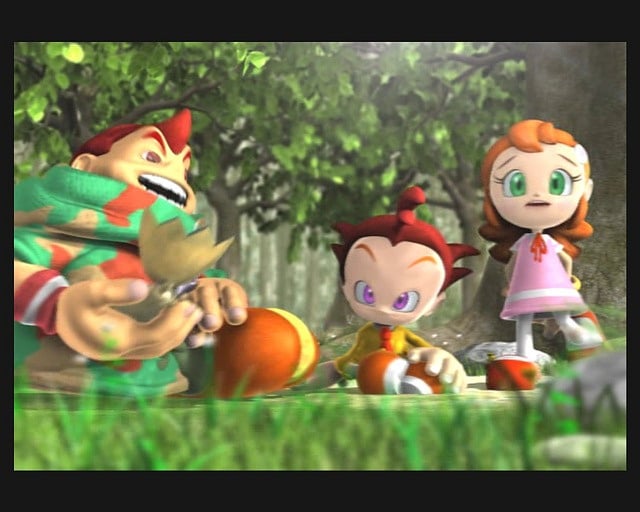
It has recently come to my attention that many of you, despite owning a Gamecube or Wii, and being fans of the Zelda series, have still not played The Legend of Zelda: The Wind Waker. If I may ask, what the hell have you been doing with your life?! This discrepancy in the gaming community is shocking, and I will not stand for it. So, let's fix that. I am going to show you today that this is not the black sheep of the main Zelda franchise, and why you need to play this game. Aside from Majora's Mask, The Wind Waker is likely the most controversial title in the series, which is likely the reason people stray away from it. But, I'm not only going to tell you that this is a legitamite title in the series, but how it may be one of it's best.
Gameplay
The Wind Waker plays similarly to its Nintendo 64 predecessors, The Ocarina of Time and Majora's Mask, which is a very good thing. You can still assign weapons to 3 different controller buttons [X, Z, and Y, in this case], and the controls remain similar, except for a few improvements. There is now a much easier-to-control difference between tiptoeing, walking, and running, because of the Gamecube's more accurate analog stick. There have been some rather nice changes to combat, as well. Link can now perform actions such as parry attacks, which let him dodge an enemy's attack, and strike back. For some enemies, this is a necessary tactic to defeat them, but for the most part, hacking and slashing will do just fine. So, yes, the combat remains mostly unchanged from the standard Zelda formula. But that's not what I want to talk about. The thing that really sets Wind Waker apart from the crowd; sailing. As you probably know, the game allows you to sail around a huge world map to 49 different islands. I always thought that this was the game's strongest point. Zelda games have always tried to give the player a vast world to explore, and this is the epitome of that idea. You could spend hours traversing the Great Sea, searching in every nook and cranny. I spent a good few days just completing the map! While some may find it boring, I think it gives you a real sense of adventure that is uncommon to find in most games. I should probably move on before I start to ramble about this, though. You will find equipment similar to what you have used in previous games, so it should feel familiar. One of the bigger additions to the game is the Wind Waker itself; a baton that you use to control the direction of the wind to sail more effectively, or solve puzzles. The method of doing so is similar to Ocarina of Time, where you must memorize musical patterns, and play them back. Nothing new there, but it is still just as good.
Gameplay: 9.5/10

Story
Little has changed about the central plot of Wind Waker in comparison to the other games in the Legend of Zelda series. You still play as a young, nameless boy [although most people just prefer to call him Link] who wears a green tunic, and must kill the evil Ganondorf/Ganon and save Princess Zelda. Now that that's out of the way, let's look at what is unique to The Wind Waker. Link is a boy living on Outset Island with his sister and grandmother. But one day, a giant bird flies over the island, carrying the captain of a pirate ship. Link goes off to rescue her, which eventually leads to the bird capturing Link's sister. The pirate crew allows Link aboard so he can rescue his sister in the bird's lair. That's about as much as I can say without giving any spoilers, but as you progress, it eventually leads to Link having to save the entire world from Ganon's plans. Standard fare for the series; it's what we have come to expect from a quality Zelda title. It doesn't have the deep, emotional narratives of an RPG, but it is what it is, and it is still a great one.
Story: 8/10

Sound
I'll cut right to the chase; The Legend of Zelda: The Wind Waker has arguably the best soundtrack of any Zelda game. That's a controversial statement, I know, but I can back it up. Since the Gamecube was Nintendo's first disc-based console, they were free to use that extra space to make disc-quality audio. This makes for a truly sublime soundtrack that captures the moment of every single situation in the game. Sometimes, I just leave the game sit at the title screen so I can hear the main theme! Now, don't get me wrong; there have been some breathtaking soundtracks in the Zelda series, but it is my opinion that The Wind Waker takes the cake. There are just so many songs that give an adventurous, bold, yet fun feeling, which is the embodiment of the Zelda series as a whole. Never have the songs in a Zelda game felt more powerful and suitable. You have to hear it to believe it, and when you do, my arguement will start to make sense. The music in The Legend of Zelda: The Wind Waker is on an entirely different level than most games. It's just not something you find everyday, and you appreciate it when you do.
Sound: 10/10
Graphics
One of the most controversial aspects of The Wind Waker was its drastically different art style. The Zelda games on the Nintendo 64 seemed to strive as much as they could for realism, but The Wind Waker adapts a more cartoon-like style. This decision has divided the Zelda fan base since the game's unveiling. I'm here to tell you that the only people who don't like The Wind Waker's graphics are people who haven't played the game. It is obvious that Nintendo put a lot of time and effort into creating some of the most artistically pleasing graphics on the system. The Wind Waker's visuals are clean, well-defined, and polished to no end. The draw distance while sailing is phenomenal; the Great Sea really seems to on forever, and you can see islands from several miles away, not counting what you can see with the telescope. It's incredible to actually be able to see your destination well before you're near it. In this way, the art style was a good decision not just in appearance, but was actually some elegant programming and system resource management. There aren't many complicated textures in many of the graphics, especially in the ocean, so the draw distance and framerate would benefit greatly. Well done, Nintendo. Oh, and the game runs in 480p if you're lucky enough to have a component cable, and it's a fairly big improvement, especially in 2D sections like the menus, where it is a night and day difference. If you got a component cable just for this game, it would already be worth it. So, The Wind Waker's graphics are both an artistic and technical triumph.
Graphics: 10/10

Extras/Value
There are plenty of side quests in The Wind Waker, so you'll always have something to work towards. After completing the game once, you unlock the second playthrough mode, which gives you special bonuses such as Link wearing his pajamas throughout the whole game, letting you use the Color Pictobox [Camera] from the start, and translating all Hylian text into English. There is also a figurine-collecting quest that requires you to obtain photographs of different things in the game to have them made into figurines. In case you were wondering, yes, it is very difficult to collect all of them. Also, there is the Zelda tradition of the item trading game. The Wind Waker is currently being sold for $20 at Gamestop, but it doesn't matter what the price is. Buy it. You will not regret it; I assure you.
Extras: 9/10

Overall
The Legend of Zelda: The Wind Waker is one of the definitive titles for the Nintendo Gamecube, and it certainly deserves that accolade. The game is a masterpiece, with polish and craftsmanship apparent in every single one of its aspects. I have completed it three times already, and I loved every minute of it. The game is completely undeserving of all the hate it has received. If you have yet to play The Wind Waker, now is the time. Stop ignoring the game because of its art style, or whatever preconceptions you may have, get yourself down to a game store, buy the game, and play it. It's about time you did.
Overall: 9.5/10
This is Lisalover1, trying to pretend the CD-i Zelda games don't exist.















